Comics and graphic novels bounced back from 2017’s sales slump to have their best year ever in 2018. That’s according to the annual report prepared by ICv2’s Milton Griepp and Comichron’s John Jackson Miller.
Combined sales in all channels were $1.095 billion, up $80 million from 2017 and a tad up from 2016’s $1.085B.
However the higher number includes some new sales channel: an estimate for U.S. and Canada sales through crowdfunding sites.
Sales in the book channel and digital sales were up in 2018, say Miller and Griepp. Comics shops, though, were down from their highs of 2016, but stil up a lot from 2018.
The report doesn’t list actual sales for 2017 and 2016 in comics shops but looking at part reports it was $515 million in 2017 and $570 million in 2016, compared to $510 million in 2018.
For the first time, however, comcis represent less than half the comcis market, when digital and crowdfunding are factored in.
I’ve put more comments from the official PR below, as Griepp and JAckson can speak to all this better than I can. But two takeaways:
• Reports that comics are dying are total horseshit.
• These numbers are still only what Avengers: Endgame made in a week or so. We can do better!
“After a brief downturn in 2017, the market bounced back last year,” Miller said. “Popular releases helped right the ship in comics shops, even as other sales avenues made significant gains.”
“A historic shift is playing out as the market grew, primarily in the book channel, in 2018,” Griepp said. “While comics stores are still the largest channel, they represented less than half the market for comics and graphic novels in 2018 for the first time in at least three decades.”
Sales in the book channel, which includes chain bookstores, mass merchants, major online retailers, and Scholastic Book Fairs, were up by double digits, with sales of kids graphic novels the biggest factor. Digital sales were also up for the first time in several years, with increased title counts across multiple platforms a factor. Sales in comic stores were down very slightly versus the previous year.
Sales of all three formats, comics, graphic novels, and digital, grew in 2018, with graphic novels leading the way, followed at some distance by digital and comics.
As presented above and in the accompanying infographics, the analysis by Comichron and ICv2 was divided up between periodical comics (what some call “floppies” or “pamphlets”), graphic novels, and digital download-to-own sales. All print figures are calculated based on the full retail price of books sold into the market, and do not account for discounting or markup. Digital sales do not include subscription-based “all you can read” services.
We’ve added a new category, “Other” to our channel breakdown. “Other” includes the Newsstand (periodical sales through specialty retail and mass merchant chains) and Crowdfunding (Kickstarter, etc.) channels. This year, those two channels each accounted for roughly half of the “Other” category.
Sources for the information include NPD BookScan, which collects weekly point-of-sale data on print books from over 16,000 locations including e-tailers, chains, mass merchandisers, independent bookstores, and more. NPD BookScan covers approximately 85% of the U.S. trade print book market. Some publishers classify titles that are primarily text, or art books, as graphic novels; we remove those titles from our analysis.
The analysis also incorporates information released by Diamond Comic Distributors, the largest distributor of English-language comics and graphic novels in the world, on sales to comic stores.
Information is also gathered from a variety of other sources, including publisher, distributor, and retailer interviews.
This is the sixth joint market size analysis from ICv2 and Comichron; the first was for 2013 sales.


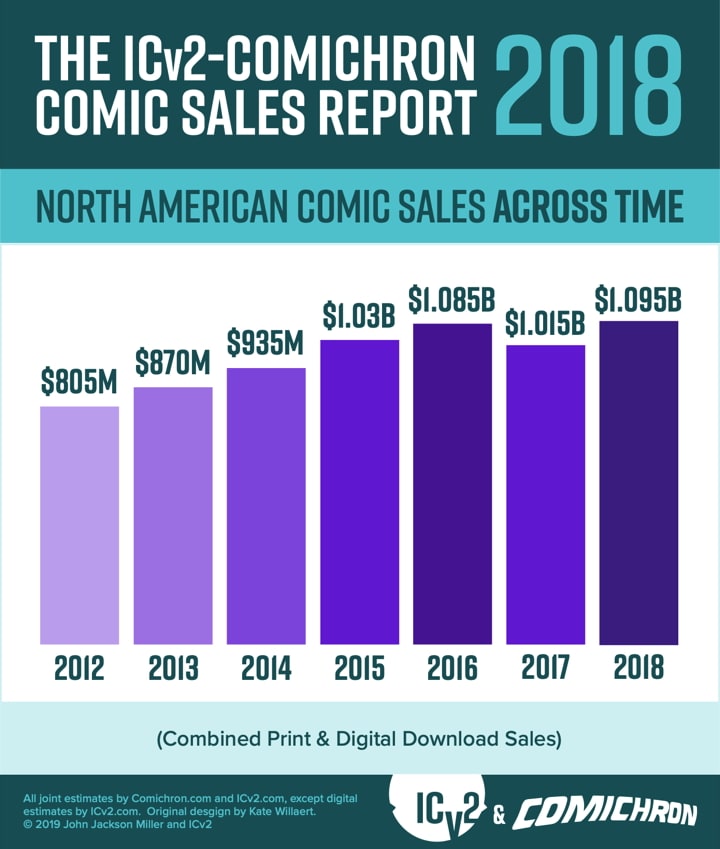
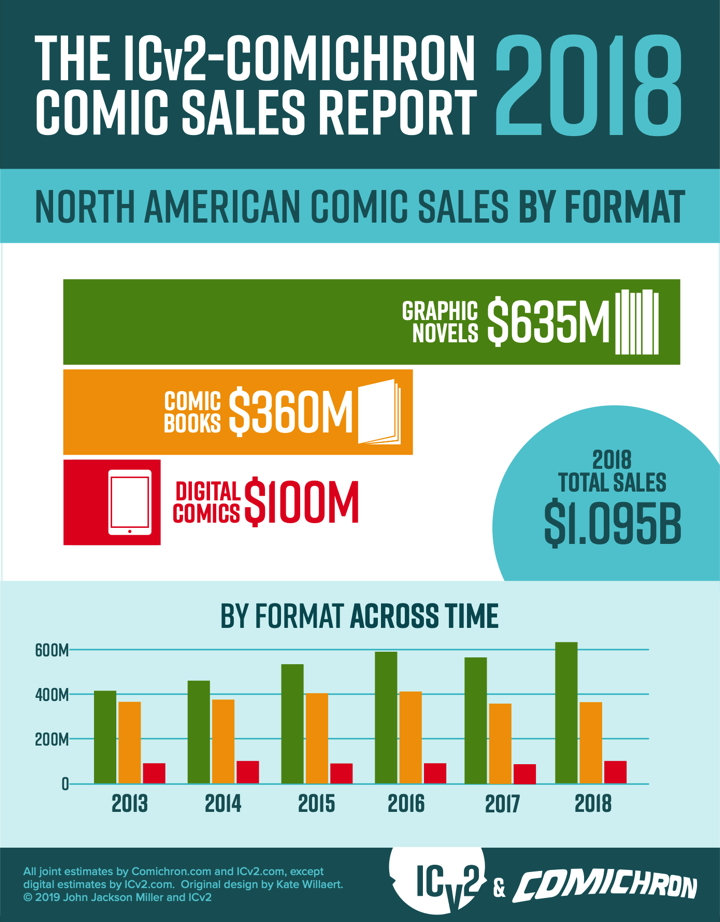
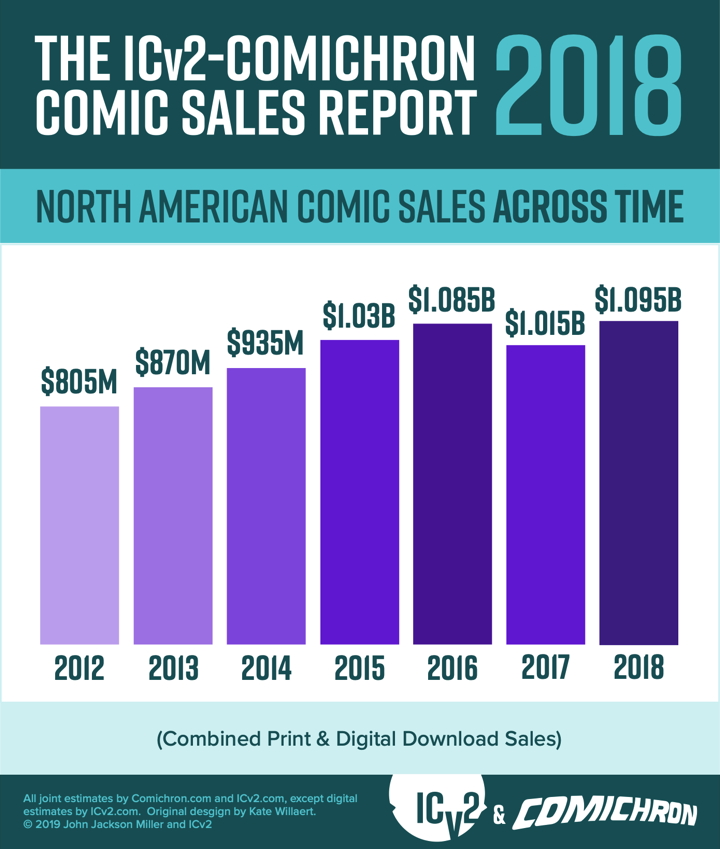
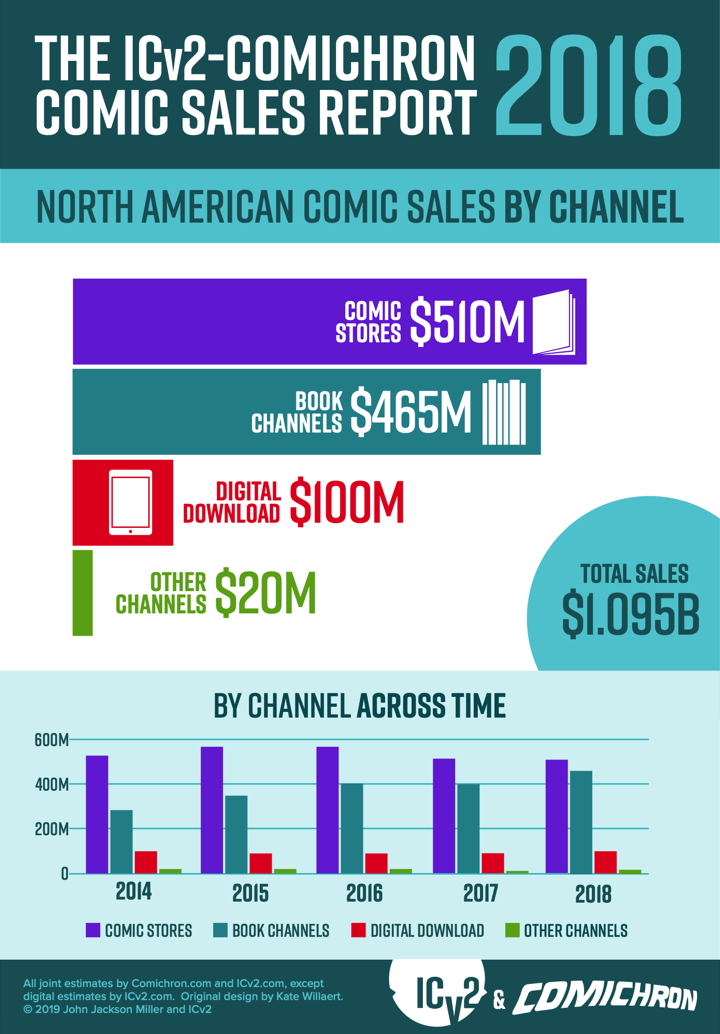
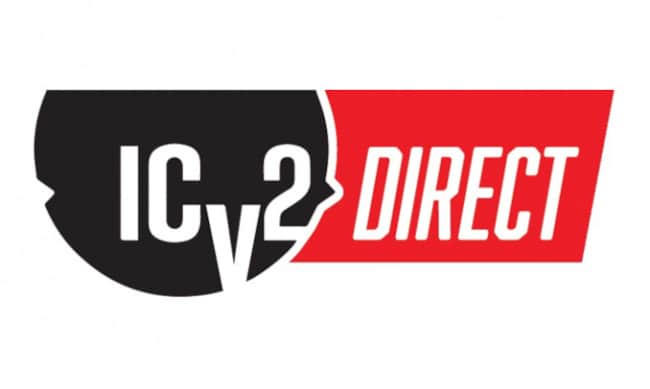
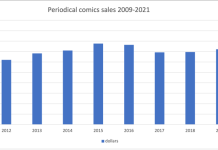




Less people buying more pricey material isn’t a thriving industry.
LOL at downloaded comics. I’d hate to think that people who read comics for free online are treated like paying customers.
The average person doesn’t even know comic books still exist in the U.S.
The entire print industry is having issues. I doubt comics is bucking the trend and has a growing audience of customers , young and old.
In short , an application of any rigor to the data presented above exposes it for what it is… what it is, is : cooking the books.
ebrgrjh, you really ought to back up comments with factual information vs your supposition that the world is caving in because that’s what it looks like in your front yard. They have provided solid data and I would add that if there was anything missing it would be the institutional sales to education and library markets as well as for the school book fairs market. Part of the reason for declining demand for books in the direct market has to do with access. The next generation customer is finding graphic novels as a common item in big box stores. Big box caters to everyone with items that sell. They do not discriminate based on personal tastes. Add to this, there are category buyers at the big box retail who are readers of comics and they are gamers. The books are not cooked. If anything, they are very conservative numbers.
What about units sold? Fewer sales of higher priced items can still result in these numbers thus masking a declining industry.
I’m not so sure this is an accurate representation of what I am seeing at my local comic shop. Fewer and fewer older readers buying more expensive items is not going to last long. Addicts are addicts and they (me) will continue to buy comics no matter the cost. I hate that digital downloads are include, as this masks the problems and inaccurately inflates the numbers relative to the pre digital age numbers. I am a paper guy all the way and I want that to continue. Adding digital doesn’t help the cause.
On second thought, my statement comes across as not so much the defense of paper comics, but the defense of local comic shops. I have to remember that not everyone can or wants to shop at the local shop.
There are so many typos and mistakes in the text of this article that it’s hard to read. This is a sad trend in “Internet journalism”. Go back and proofread what you write before you post it. Sorry but it needed to be said. You can do better, Heidi! Anyway, I think these numbers seem sketchy. If comic books are selling so great then why are so many stores going out of business?
“ebrgrjh, you really ought to back up comments with factual information vs your supposition that the world is caving in”
You really want facts? How about the fact that the Direct Market IS shrinking. The circulation of the average comic book has gone down over the last twenty years, as part of a FIFTY YEAR trend.
The comic companies have been compensating for lost customers by raising prices.
W I agree with the hive mentality among industry insiders that institutional sales to education and library markets as well as for the school book fairs market is the only part of the market for “comic books” that isn’t shrinking but that’s not due to consumer demand, but teachers desperate to get kids to read ANYTHING and a growing market of kidult women, many of whom who are in academia, who some say are the real audience for educational comics.
https://globalcomment.com/hbos-animal-adult-coloring-books-birth-of-the-kidult/
The worst thing about the academic market is that is a sign that comics are a dead medium.. If a medium is primarily appreciated by academia or is financially supported by academia, it is usually dead. Poetry, Classical Music, Jazz music, are all things that are much more popular inside academia than with the proletariat.
We all know of things that are “critically acclaimed” but are financially unsuccessful or are supported by philanthropy. We never call these things, usually, thriving. They are very niche things enjoyed by a tiny group of people. The entire comics industry is becoming like Fantagraphics. It’s becoming academic, and even more niche. The recent X: Men: Grand Design would never have happened in the past. It’s a product of an industry that’s turning into a museum. Museums look back at things that are dead.
I don’t care how many graphic novels (the ya/educational market is growing very slowly) are ordered by librarians who are looking at awards and reading lists for what to order, they are not creating readers. The material appeals more to the librarians and educators than the kids.
“The next generation customer is finding graphic novels as a common item in big box stores. ”
You need to stop with the hyperbole.
The stuff I see offered at big box stores is a very small selection and it’s not exactly flying off the shelves. Based on what I saw at my local Target , I’d say that very few children are discovering comics at big box stores. All periodicals are losing shelf space these days. There is less interest in them.
I don’t see how are comics bucking the trend. If you are going to be convincing you are going to have to prove someone is making a profit. Just because something is in a big box retail store does it mean someone is making a profit o. It means they are experimenting with comics. This is not the first time retail has experimented with the occasional comic in recent years. The latest experiments may be abandoned if the results are lackluster.
People who say comics are not a dying medium need to provide compelling evidence that there are new readers being created in large numbers who are paying for comics.
the comments give me a sad; move along, weirdos. that you are out of touch with how people purchase comics doesn’t mean they aren’t being purchased.
No one doubted that the units and dollar amounts don’t exist , what the skeptics ask if those things represent purchases made by institutions, that are not really read, or do they represent a large influx of new readers.
There are a lot of academic papers being produced. That doesn’t mean there’s a huge audience for them.
ebrgrjh,
I’m not sure where you get the idea that lots of academic papers on comics/graphic novels are being written. I work in humanities academic publishing, and I can confirm that comics are still a pretty niche topic. I think I edit about one per year across the eight humanities journals I edit. And there’s only handful of dedicated academic journal for comics/graphic novels.
Also, I’m not sure where you get the idea that librarians are buying material they know won’t be read. Libraries don’t have enough funds to buy material that won’t be circulated. I’m not an expert in this area, but I do know from talking to the librarian that runs the comics book group at my library that (1) libraries run analytics on how their collections circulate and have lots of data about what is and isn’t of interest to their patrons and use this data to make acquisitions decisions and (2) just because a comics-fan librarian wants the library to buy something doesn’t mean the the collections development staff will; the comics advocates within the library have to make their case for spending those dollars on comics.
Even without access to lots of library analytics, it’s pretty easy to see at most libraries how in demand certain books are by seeing how many copies are currently on the shelf. At my library, all 11 copies of “Drama” are checked out; 12 of 14 copies of “Ghosts” are checked out; all 14 copies of “Sisters” are checked out; 14 of 16 copies of “Smile” are checked out; 23 out of 24 total combined copies of Telgemeier’s Baby-Sitter’s Club books are checked out; 3 of 4 copies of Tom King’s “Miracle Man” are checked out. (And, for comparison, all 10 copies of Harry Potter and the Sorcerer’s Stone and all 9 copies of Chamber of Secrets are also checked out. But it certainly is telling that the library has more copies of most Telgemeier books than the Harry Potter books.)
What’s bizarre is how libraries are the ones that primarily buy these comics and how they are “best sellers” . No one seems to be spending their own money on these titles. These are books subsidized by the government and they’re best sellers. There are supposedly new readers created by the academic market but no one can prove it beyond the “books checked out ” statistic in library databases.
As I’ve said before, a lot of academic research papers are published throughout the world. The global output of academic papers is not a reflection of demand for academic research papers.
A lot of Harry potter books sold are probably unread. The publishing industry is depending a lot on women (librarians and teachers or as you call them “young adults, or “middle-school readers”)making impulse purchases, just like fanboys collect crappy comics out of habit.
https://www.goodreads.com/topic/show/496932-unread-books-on-your-bookshelves
but does that mean more people are reading more books? I doubt it.
Comments are closed.